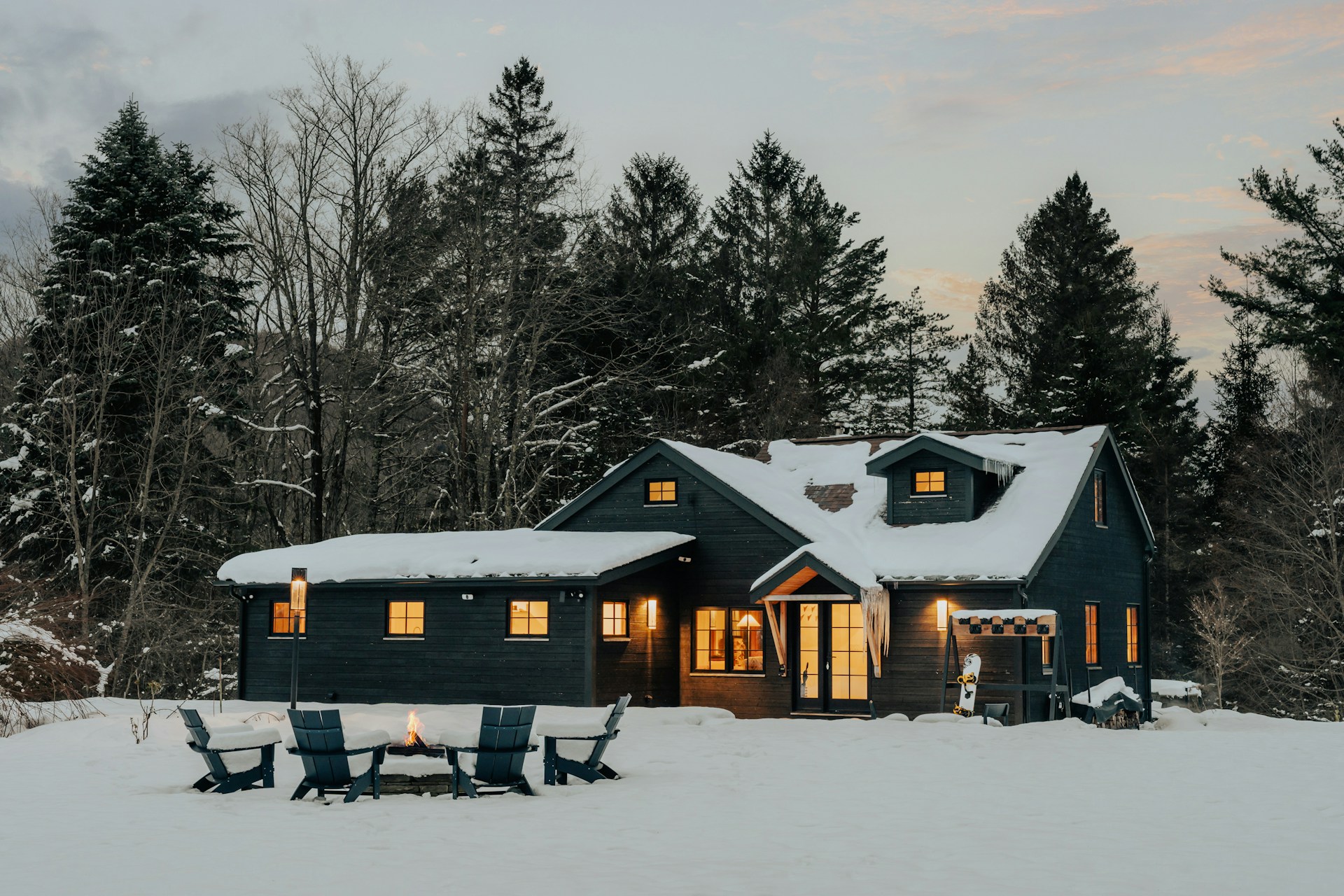As the chill of winter settles over Ottawa, Ontario, residents brace themselves for the annual battle against a common cold-weather nemesis: ice dams.
Cities like Ottawa, Ontario, where Panda Insulation is based, experience harsh winter conditions that make homes highly susceptible to the formation of these troublesome ice formations.
Join us as we delve into the intricacies of ice dams, exploring their causes, impacts, and most importantly, effective solutions to safeguard homes against their icy embrace.
What Are Ice Dams?
Ice dams are ridges of ice that form at the edge of a roof and prevent melting snow from draining off properly.
They occur when the upper areas of a roof are warmer than the lower areas, causing snow on the upper part of the roof to melt and flow down. However, when this melted snow reaches the colder eaves or overhangs of the roof, it refreezes, creating a barrier or dam.
As more snow melts and refreezes, the dam grows larger, potentially causing water to back up under the shingles and leak into the home, leading to damage to ceilings, walls, insulation, and even structural components.
Ice Dam Prevention
Preventing ice dams involves addressing the underlying causes that lead to their formation. Here are some strategies to help prevent ice dams:
- Insulation: Ensure that your attic or roof space is properly insulated to prevent warm air from escaping and heating the roof, which can melt snow and contribute to ice dam formation. Pay particular attention to insulating the attic floor to keep warm air from rising into the attic space.
- Ventilation: Proper attic ventilation helps maintain a consistent temperature on the roof, reducing the likelihood of snow melting and refreezing at the eaves. Make sure your attic is well-ventilated with soffit and ridge vents or other ventilation systems designed for your roofing type.
- Sealing: Seal any air leaks in the attic floor, such as around plumbing vents, chimneys, light fixtures, and attic hatches, to prevent warm air from escaping into the attic space.
- Roof Maintenance: Keep your roof clear of snow using a roof rake or hiring professionals to safely remove excess snow. This helps prevent the buildup of snow that can contribute to ice dam formation.
- Heat Cables: Installing heat cables along the eaves can help melt snow and ice, preventing the formation of dams. However, this is more of a temporary solution and should be used in conjunction with other preventative measures.
- Professional Assessment: Consider hiring a professional roofing contractor or energy auditor to assess your attic insulation, ventilation, and overall roof condition. They can identify any issues contributing to ice dam formation and recommend appropriate solutions.
How Insulation Helps Prevent Ice Dams
Home insulation plays a crucial role in preventing ice dams by helping to maintain consistent temperatures throughout the attic space. Ice dams typically form when heat from the interior of a home escapes into the attic, causing the underside of the roof to warm up. This warmth melts the snow on the roof, which then refreezes when it reaches the colder eaves, forming ice dams.
Here’s how proper home insulation can prevent ice dams:
- Maintaining a Consistent Temperature: Adequate insulation in the attic helps to keep the temperature in the attic space closer to the temperature outside. This prevents the roof from warming unevenly, reducing the likelihood of snow melting and refreezing at the eaves.
- Minimizing Heat Loss: Insulation acts as a barrier, preventing heat from escaping from the living spaces below into the attic. By minimizing heat loss, insulation helps keep the underside of the roof colder, reducing the chances of snow melting and refreezing.
- Improving Ventilation: Proper insulation goes hand in hand with good attic ventilation. Ventilation allows cold air to circulate under the roof, keeping it cooler and preventing snow from melting prematurely. This helps to maintain a consistent roof temperature and prevents ice dams from forming.
- Preventing Condensation: In addition to preventing ice dams, insulation also helps to prevent condensation in the attic. Condensation can lead to moisture issues, which can compromise the effectiveness of the insulation and lead to other problems like mold and mildew.
- Addressing Air Leaks: Insulation also helps to seal up air leaks in the attic, which can be a significant source of heat loss. By preventing warm air from escaping into the attic, insulation reduces the likelihood of uneven heating on the roof surface, further minimizing the risk of ice dams.
Protect Your Home from Ice Dams this Winter
By taking proactive steps to address insulation, ventilation, and maintenance issues, you can minimize the risk of ice dams and protect your home from potential water damage during the winter months.
If you’re located near Ottawa, Ontario, you can book a free insulation inspection and assessment with Panda Insulation to see if your home can benefit from upgraded insulation to mitigate ice dams.
Frequently Asked Questions About Ice Dams
Ice dams are ridge-like formations of ice that occur along the edges of roofs. They form when heat from the interior of a building causes snow on the roof to melt, and the melted snow refreezes at the colder edges of the roof, creating a dam. This dam prevents proper drainage of melting snow and can lead to water damage inside the building.
Ice dams form due to a combination of factors including inadequate attic insulation, poor attic ventilation, fluctuating temperatures, and the presence of snow on the roof. When warm air from the interior of a building escapes into the attic space, it heats the roof and melts the snow. As this melted snow reaches the colder edges of the roof, it refreezes, creating ice dams.
Ice dams can cause significant damage to buildings if left unaddressed. They can lead to water seeping into the roof, causing leaks, water damage to ceilings, walls, insulation, and even structural damage. Additionally, the weight of ice dams can put stress on the roof, leading to potential collapse in extreme cases.
Preventing ice dams involves a combination of strategies including ensuring proper attic insulation to minimize heat loss, improving attic ventilation to maintain consistent temperatures, sealing air leaks, and keeping gutters and downspouts clear of debris. Additionally, removing snow from the roof using a roof rake can help prevent ice dams from forming.
If ice dams have already formed, it’s important to address them promptly to prevent further damage. This may involve using a roof rake to carefully remove excess snow, chipping away at the ice dams (if safe to do so), or employing professional de-icing techniques. It’s crucial to avoid using sharp tools or applying excessive force, as this can damage the roof.
While minor ice dams may be manageable for homeowners to address themselves, it’s often safer and more effective to enlist the help of professionals, especially for larger or more severe ice dams. Professional contractors have the expertise and equipment necessary to safely remove ice dams and address any underlying issues with insulation or ventilation.
To prevent ice dams from recurring, it’s essential to address the underlying causes such as inadequate insulation and ventilation. Investing in proper attic insulation, ensuring adequate attic ventilation, sealing air leaks, and keeping gutters clear are key steps to preventing ice dams from forming in the future. Regular maintenance and inspections can also help identify and address potential issues before they escalate.




